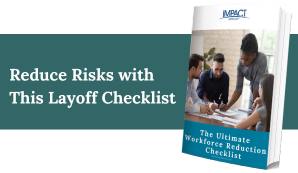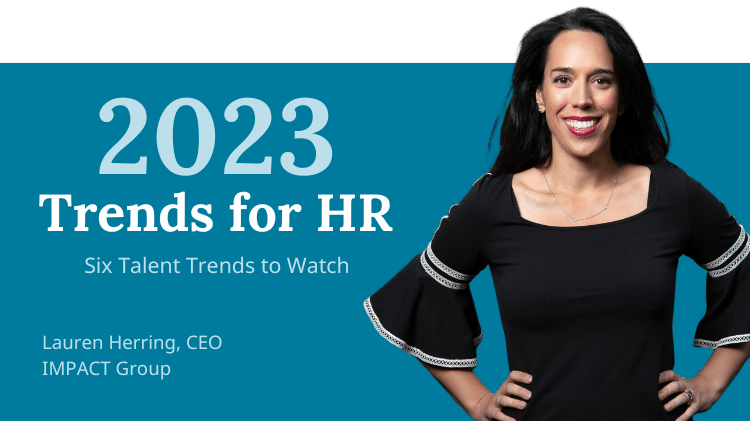HR trends are ever-changing. Here are six key trends we expect will have the most impact over the next five years. But before we describe these trends, let’s quickly affirm what’s not changing: A company’s future continues to depend on its ability to recognize and develop top-tier talent. Leaders are challenged like never before.
HR Trends No. 1: Talent shortage drives up investment in human capital
The nature of certain fields will change exponentially and defy the supply of skills available. At the same time, Baby Boomer retirements will reveal the next generation is underdeveloped. Facing a shrinking talent pool, the skills and assets your company needs will simply be unavailable or unaffordable. In other words, forward-thinking businesses will combat this HR trend by developing capabilities within the existing pipeline. As a result, this will deliver a marked return on investment. HR will need to create effective models to achieve retention rates. In turn, this ensures payback on these investments. People report higher likelihood to stay with employers that provide training. So the intrinsic value of development, plus compensation incentives, might be combined with contractual obligations. This means employees will be required to pay back the cost of training if they leave sooner than expected.

HR Trends No. 2: Remote work creates “Big Brother” tension
Trust issues will be a minefield for both the employer and employee. Employers have a heightened interest in identifying workers who aren’t working (from home). However, the trend of monitoring workers’ productivity using surveillance software (aka spyware) will waste energy, relationship capital, and dollars. Highly valued and productive employees will be put off by over-reaching, excessive monitoring. Meanwhile, tech-enabled slackers will find ways to loaf and play games on company time. As Wired magazine reports, workers are downloading virtual machines to “ring-fence offending programs – and their work – from the rest of their computer.” That means that people can “work” in one window and game in another. Crafty employees can use numerous strategies to dodge their employers’ monitoring efforts. Ultimately, leaders will need to think more strategically about how to measure and value each person’s performance output to avoid the turmoil of clock and screen watching.
HR Trends No. 3: “Always on” recruiting & poaching through social
Shrinking talent availability will lead to even more sophisticated recruitment strategies. In turn, richer and more verified data will be needed on social media platforms. Before, your employees would need to take more proactive steps to pursue a new job. And uninvited calls from recruiters were easy to ward off. Now your talent’s validated credentials will be easier to spot through accredited badges. Those looking for skills (vs college degrees) may de-emphasize degree and even employment verification. They will put more stock in verified, online credentials. AI tools will mine the universe of social media with more precision. As a result, competitors can seduce your best talent much more effectively. This includes those who simply weren’t looking.
HR Trends No. 4: “Employee First” thrusts Leaders with EQ to the top
Much has been written about the new “Employee-First” culture. We’ve all seen the historic sweep of resignations and the pandemic-induced power shift from employer to employee. The status that used to be conveyed by title, ability to reward, and power to fire are simply no longer enough. Bosses can no longer simply command employees to do what they’re told. Therefore, many leaders are wondering, if I can’t entice my team members to make the effort to drive into the office, can I inspire them to conjure up enough fervor and determination to achieve company goals?
Forward-thinking organizations have seen this shift – to an Employee-First culture – coming for some time. At these organizations, professional career development already focuses on the skills, knowledge and EQ that’s needed to lead others. Note that the development of emotional intelligence – what was once categorized as a “soft skill” – will be the coveted competency for new talent.
No. 5: Coaching & gamification become pillars of development
To capture the interest of the Employee-First culture, on demand, highly relevant, and engaging formats will be required. Attention and commitment to online learning will be sparked by gamification. Along with this, your employees distinguish themselves by earning coveted credentials, such as certifications, points, and badges. As work becomes a game, coaches will be even more of an imperative. The effective leader will demonstrate emotional intelligence and the ability to wield power through relationships. Likewise, leaders will lean less into classroom-style, content-heavy workshops and more into their relationship with a coach. The emphasis will be on higher levels of performance, not knowledge by itself. Employees will expect to be coached. This includes employees at all levels – not just leaders and executives.
No. 6: Your teams grow in multicultural diversity
Sometimes it takes a natural disaster, a global pandemic, or even the horror of war to call our attention to the mix of global cultures we find on today’s teams. As talent supplies shrink, organizations will continue to reach farther and wider for talent. As a result, offshoring various operations will intensify. Once again, forward-thinking organizations have already begun recognizing the need for developing people’s awareness and skills. Subsequently, they understand people can work more effectively in teams with varied global backgrounds.
Get ahead of these trends now
What can you do to get ahead of these trends? Recognize that you need to build and maintain the EQ of your leaders. In addition, build and maintain your talent pipeline. Next, scale up your coaching efforts. Lastly, build more multicultural competency within your ranks. These three initiatives go hand and hand. IMPACT Group’s global network of coaches and leadership development solutions can help.
Want more trends data?
Get our latest report here: Fit for Purpose Leadership Development Study











